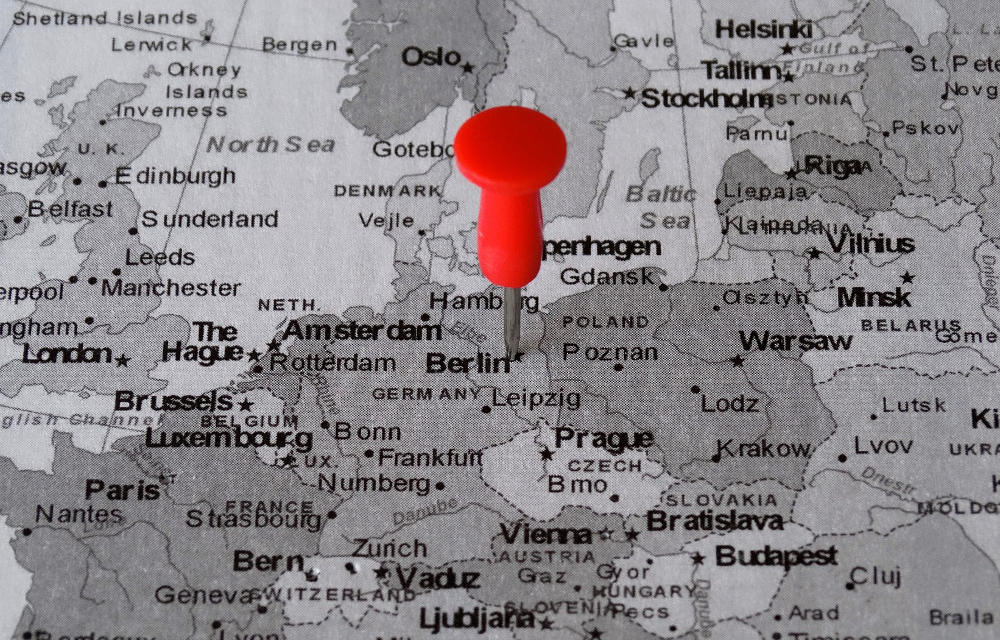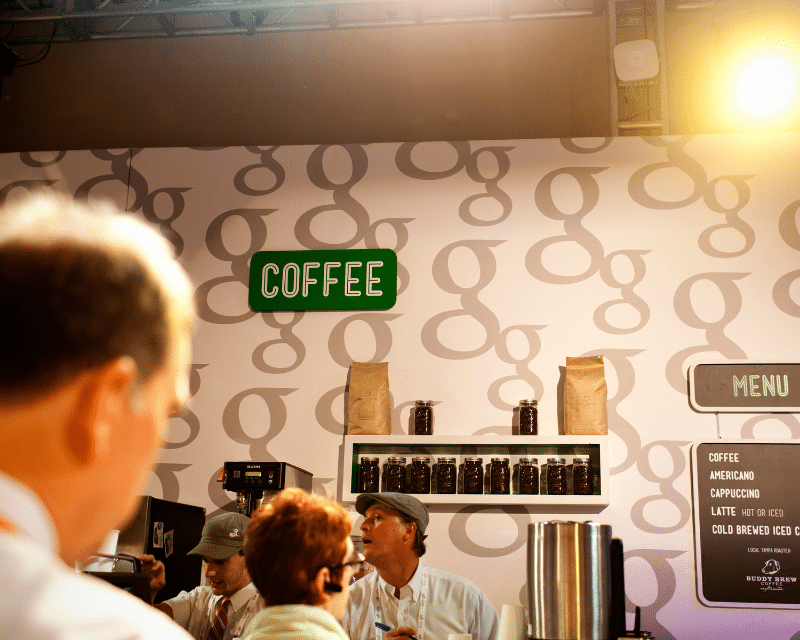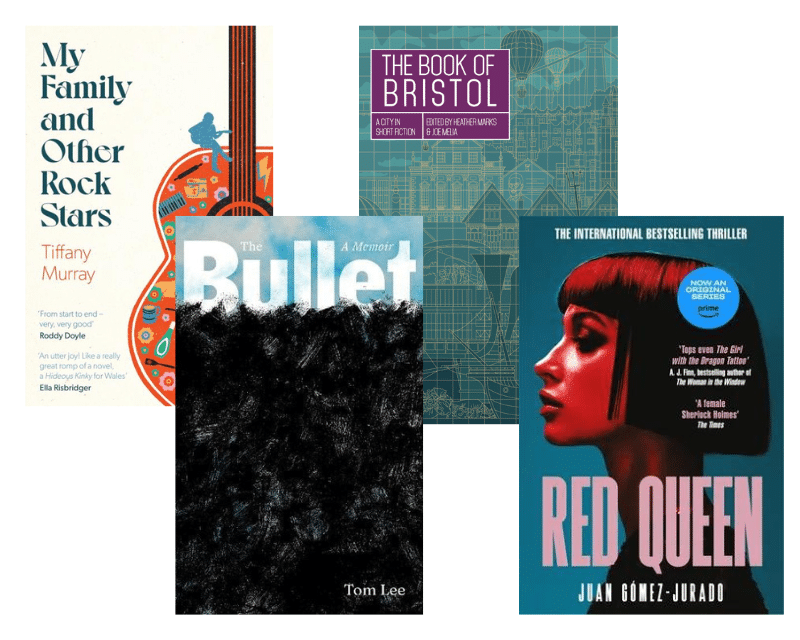- Collected
- Article
Alone In Berlin
A literary walk around a great European city

- 12 June, 2017
- Christina Koning
A year ago, on the eve of the referendum on whether Britain should remain part of the EU, I was in Berlin, that great European capital, which has seen so much turmoil in its eight-hundred-year history, but which now stands as a symbol of what can be achieved when opposing sides agree to sink their differences and work together, and walls come down. I was in Berlin to research a novel – the latest in a series of detective stories, set in the nineteen-thirties – and it was my first visit; although, in a sense, it was a city I’d visited many times before.
My first encounter with the place was, oddly enough, through a detective story. No, it wasn’t one of Philip Kerr’s — I was only ten at the time, and this was long before the ‘Berlin Noir’ novels appeared. When I first read Erich Kästner’s classic of children’s fiction, Emil and the Detectives, I had only the haziest idea where Berlin was. But the story of young Emil Tischbein, who goes to Berlin to visit his grandmother, and ends up joining forces with a gang of local boys, in order to track down the man who has stolen Emil’s travel money, captivated me from the start. Here is Emil’s first impression of the city as it was around 1929, the year of the book’s publication:
Motor cars rushed past with horns honking and screeching brakes… The noise was indescribable, and on the pavements crowds of people kept hurrying by. Out of every turning van and lorries, trams and double-decker buses swarmed into the main thoroughfare… Wherever Emil looked there were gay shop windows filled with flowers and fruit, books, clothes, fine silk underwear, gold watches and clocks. And all the buildings stretched up and up into the sky. So this was Berlin!
A short trip on the U-Bahn took me from Zoo Station – Emil’s first stop in Berlin, and also where the hero of Mr Norris Changes Trains arrives for his sojourn in the city – to Nollendorfplatz. This, as admirers of Christopher Isherwood’s Berlin novels will know, is near where ‘Herr Issyvoo’ (his landlady’s name for the author) rented a room between December 1930 and January 1933, and where his fictional alter ego, William Bradshaw, also lived. It’s now a quiet residential area, of late nineteenth-century apartment buildings, and shows little sign of its raffish past, as the one-time centre of Berlin’s nightclub district. In the second of the two books, Goodbye to Berlin, we meet aspiring actress turned nightclub singer Sally Bowles — later immortalised by Liza Minnelli, in the 1972 film, Cabaret. Here is Sally, performing at the appropriately named Lady Windermere’s Fan (this part of Berlin being well-known then and now for its gay and lesbian bars, where an Oscar Wilde reference would not have gone unappreciated):
She sang badly, without any expression, her hands hanging down by her sides — yet her performance was, in its own way, effective because of her startling appearance and her air of not caring a curse what people thought of her.
Sally is hoping to get a job at UFA, the Berlin film studios famous for – amongst other films of the Weimar period – The Blue Angel, starring Marlene Dietrich as the femme fatale who enslaves and eventually destroys Emil Jannings’s respectable schoolmaster. Because my novel is set in the film world of the era, I made a trip to the studios at Babelsberg, an hour’s train ride out of the city, where I was able to wander around studio lots whose buildings appeared to have changed little from the days when directors such as Fritz Lang and Billy Wilder made their name here.
The studios, which have naturally expanded to meet the demands of twenty-first century film-making, have a darker past, too. When Joseph Goebbels was appointed Hitler’s Minister of Propaganda, in March 1933, he determined to make UFA an essential part of his armoury for controlling hearts and minds: ‘Even entertainment can be politically of special value,’ he wrote in his diary some years later, ‘because the moment a person is conscious of propaganda, propaganda becomes ineffective.’
And so, instead of the dystopian visions of Lang’s Metropolis, or his terrifyingly prescient tale of a Berlin serial killer, M, Ufa studios began churning out Nazi propaganda films, conscripting some of the era’s most distinguished actors in order to do so. In his 1936 novel, Mephisto, Klaus Mann describes the rise to fame of actor Hendrik Höfgen – a thinly disguised portrait of Mann’s own brother-in-law, the actor Gustav Gründgens – who abandons his Communist affiliations, and his scruples, to become a protegé of Hermann Göring, a devil’s pact he later comes to regret.
In the Berlin drawing rooms anyone was welcome who either had money or whose name appeared constantly in the popular press. In the fashionable quarters of the Tiergarten and Grunewald black marketeers mixed with racing drivers, boxers and well-known actors. A successful banker was proud to have Hendrik Höfgen at his receptions.
I spent an afternoon wandering around the Tiergarten – Berlin’s beautiful central park – and admired elegant classical buildings by Karl Friedrich Schinkel and others, which adorn nearby streets, such as the famous Unter den Linden, with its double rows of lime trees. I took a turn in front of the Hotel Adlon, once the haunt of film stars such as Louise Brooks, Douglas Fairbanks and Charlie Chaplin, as well as a hangout for British and American foreign correspondents in the years leading up to the Second World War. Much of the centre of Berlin was reduced to rubble by Allied bombing, including the area around Pariserplatz and the Brandenburg Gate —the only structure left standing. A programme of reconstruction following reunification in 1990 has restored much of the area’s former splendour. Nearby stand the sombre concrete blocks of the Holocaust memorial, a harrowing reminder of the darkest period in the city’s history.
To get some idea of the devastation visited upon this city during the war, one has only to go to Alexanderplatz (setting of another celebrated Berlin novel, Berlin Alexanderplatz, published in 1929 by Alfred Döblin). Here, in place of the nineteenth and early twentieth-century apartment buildings and department stores which once characterised this bustling intersection, is a cacophony of architectural styles. Towering modern office blocks compete with Cold War era space needles and giant revolving clocks, around a vast and windswept concrete emptiness.
Before I ended my tour of Berlin, there were two places I had to visit. The first was Jablonskistrasse, in Prenzlauerberg, home of the reluctant hero of another great Berlin novel, Hans Fallada’s Alone in Berlin, published in 1947. Otto Quangel and his wife Anna are an ordinary middle-aged couple driven to extraordinary actions, after their only son is killed on the Eastern Front. Based on a true story, the novel describes the couple’s campaign to undermine the regime they believe is responsible for their son’s death, by leaving handwritten postcards all over Berlin condemning the Nazi oppressors:
...at around three o’clock the Quangels left their apartment. They had intended to take the U-Bahn as far as Nollendorfplatz, but just before Bülowstrasse, Quangel suggested they get off here — maybe they could do something. She knew he had the two postcards in his pocket.
Prenzlauerberg is now a charmingly Bohemian district, its tree-lined streets full of art galleries, clothes shops and restaurants, a world away from the grim working-class area portrayed in Fallada’s novel. No less attractively arty is Kreuzberg, where I went for the final stop on my literary pilgrimage. Because it’s here – not far from my hotel, in Hedemannstrasse, in what was once East Berlin – that I found remnants of the great concrete wall that once divided the city into Communist East and Capitalist West. Now the Wall, whose construction began in 1961, and which was only dismantled in 1989, following Mikhail Gorbachev’s initiatives of glasnost and perestroika, has a disarmingly peaceful look, with its murals by international artists, and stalls selling Red Army caps, in which you can have your photograph taken at Checkpoint Charlie.
But it was once a place of horror: two hundred and thirty-nine people died here during the Cold War years, shot whilst trying to escape from East to West Berlin. It’s this terrible period that forms the backdrop to perhaps the most famous Berlin novel of all: John Le Carré’s The Spy Who Came in from the Cold. No one who visits the city, as I did, on that sunny June afternoon, can ever forget that it was once two cities, divided by competing ideologies. As Le Carré’s bleak novel makes clear, it was not always easy to tell, even at the time, whose side was ‘winning’, nor indeed, who the ‘good guys’ were:
Now everyone was shouting, English, French and German mixed; he heard Smiley’s voice from quite close: ‘The girl, where’s the girl?’ Shielding his eyes he looked down at the foot of the Wall and at last he managed to see her, lying still.
Yes, there’s a lot to be said for breaking down walls.
You might also like:
Anywhere But a Room of One’s Own
I am a writer looking to be re-homed. All I need is a laptop, a table and a chair, and…
RLF Fellows’ News: May 2024
Publishing RLF Fellow Tom Lee’s new book, The Bullet, his memoir about family and mental health, has recently been published…
Her Majesty The Queen is announced as our new Royal Patron
To mark the first anniversary of Their Majesties’ Coronation, it has been announced Her Majesty The Queen will take on…


